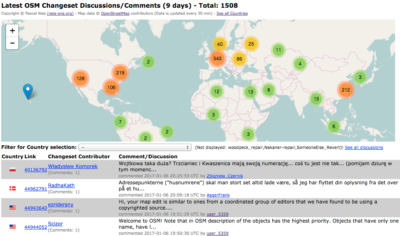Adding Indicators to OSM Map Edits Assessment
Almost two years ago I published a web service that finds suspicious OpenStreetMap (OSM) map changes. You can use the service here and find some more information in previous blog posts. Especially Changeset discussions revealed that they are more or less de facto standard for communication between contributors during map change reviews.
However, when I am inspecting map changes, I sometimes see new contributors using uncommon OSM tags. Therefore I think it could be useful to add an additional assessment parameter to the aforementioned suspicious OSM map changes page. The newly introduced indicator states the matching ratio between the contributed and the most popular OSM tags. This means, if the changeset contributor used many uncommon tags at her/his map changes objects, the matching rate will be low. If the contributor applied many common (“popular”) tags, it results in a high matching rate towards 100%. For the calculation I used Jochen Topf’s taginfo API to get commonly used OSM tags. An API description can be found here. Furthermore I added the average age (in days) of modified and deleted objects. This indicator can be used to see if the contributor edited objects, which have been mapped today (0 days) or exist already for a longer period of time, e.g. 1566 days. The values for the average version numbers are computed in a similar fashion.
